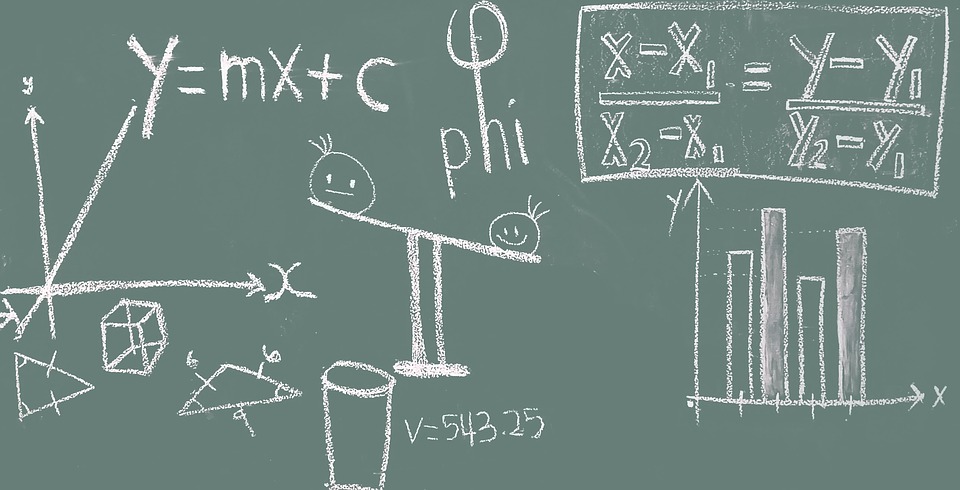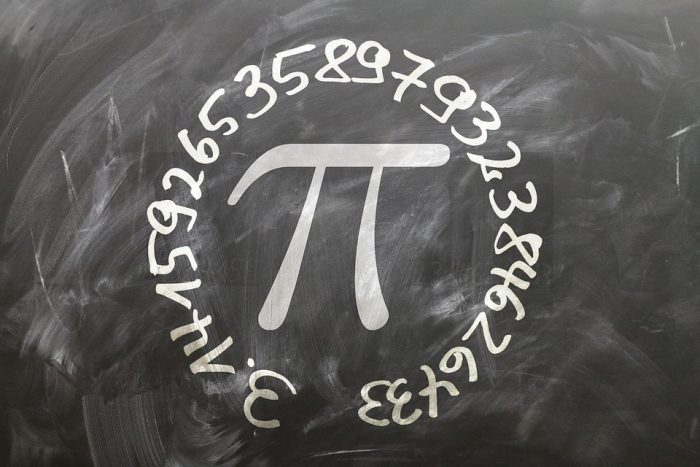
Are you going to be taking a test like SAT or the GRE? If you are, there are certain mathematical formulas that you should be aware of. You should study the most common mathematical formulas on a cheat sheet, a list of the most useful formulas – the formulas you’ll be expected to utilize on the SAT or GRE. This math cheat sheet will give you the most common math formulas, but you’ll want to have these math formulas memorized on test day. You’ll also want to know how to integrate these formulas into your test preparation as effectively as possible.
Why Should You Memorize Math Formulas?
Perhaps you are wondering why the formulas below should be memorized. You should memorize these formulas because having them memorized will provide you with a substantial advantage on the day of the test. When you know which formulas you need to apply, as well as how to apply them best, you’ll be able to come up with the answer quicker and with more accuracy. If you can’t recall which formula you need to use you won’t be able to come up with the correct answer to the question. Even if the answer to a problem can be ascertained by another method, a method that doesn’t use these formulas, knowing the formulas will often save you a lot of time.
Geometry Formulas

Photo: geralt via Pixabay, CC0
Formula for finding the perimeter of a square: p = 4s. (multiply the length of any one side by 4).
Formula for finding the area of a square: A = s^2 (multiply any two sides of the square together).
Formula for finding the perimeter of a rectangle: P = 2l + 2w. (Multiply the width by the length, and the sum the products of the multiplication together).
Formula for finding the area of a rectangle: A = lw. (multiply the width by the length of the rectangle).
Formula for finding the circumference of the circle: A = πr^2, C = 2πr. (You can multiply pi and the radius by 2 or alternatively you can multiply the diameter of the circle by π. Remember that the two radii are equivalent to the diameter).
Formula for finding the area of a circle: A = πr^2. (Just take the radius and multiply it by pi).
The Pythagorean Theorem:
The Pythagorean Theorem states that in a right triangle the square of the hypotenuse is equal to the sum of the squares of the other sides of the triangle. The Pythagorean Theorem is this: A^2 + B^2 = C^2. Remember that this theorem can only be applied to 90-degree triangles/right triangles. Since b and a are the shorter sides of the triangle, c is the longest side or the hypotenuse.
Formula for finding the area of a triangle: A = 1/2bh (take the height and multiply it by the base and then divide by 2. Remember that the angles found in a right triangle will sum up to 180 degrees).
Formula for finding the area of a trapezoid: A = (a+b/2)h. (B and a are the parallel sides, and you will add them together then divide 2, then multiply this number by the height).
Calculating Distance
D = rt (When the rate is r and time is t, multiply r and t together to determine the distance (d). It is also possible to solve for the rate or time by swapping the formula to r =D/t or t = D/r).
Determining The Slope Of A Line

Photo: 6689062 via Pixabay, CC0
The formula for determining the slope of the line: y =mx + b.
Understand that the slope is just the steepness of the line, as graphed on a coordinate system. The slope is represented by m, and y and x are the coordinates. The point at which the line passes through the y-axis is the y-intercept, represented by b. On occasion you might see the slope/line equation given like this: b = y-mx, just know that his is the same thing as Y = mx + b, so it can be converted to this format. In fact, if an alternate form of Y = mx + b is witnessed, it should be converted to avoid confusion.
Lines that slant downwards as they move left to right have negative slope while lines that slope upwards as they move left to right have a positive slope. Horizontal lines have a slope of 0. If you are given two sets of coordinates, the slope is calculated by subtracting y1 from y2 and x1 from x2:
m = y2 – y1/x2 – x1 (slope = rise/run). Y1 and x1 are coordinates on a line which correspond while y2 and x2 are separate pairs of coordinates on this same line.
Determining The Average
Formula for determining the average = sum of n numbers/n.
Formula for determining the average speed = total distance/total time.
The mean is another word for the average. Be sure to distinguish average/mean from other statistical terms like median, mode, and range. Median refers to the middle number in a data set, while mode is the data set’s most common number, and range is the difference between the lowest number in the data set and the highest number in the set.
Probability Formula
The probability for an event occurring = number of successful outcomes/total number of possible outcomes. Meanwhile, the probability of two independent events occurring are the probability of event A multiplied by the probability of event B. While probabilities are typically given in a fraction, you may see the probabilities given as either ratios, percentages, or decimals.
Percentage Formulas

Photo: kalhh via Pixabay, CC0
To get percent X of number N: n(x/100).
Another way that this could be solved is by taking the decimal point and moving it to left two spaces, then multiplying the result by N.
To determine what number N is X percent: 100n/x. Meanwhile, you can do this in reverse to figure out what percent is number N of a number M: 100n/m.
To determine percent change, use the following formula: final amount – original amount/original amount * 100 (subtract the original amount from the final amount and then divide by the original amount, then multiply everything by 100).
To find how much a percentage decreased, simply reverse the given formula: original amount – final amount/original amount * 100.
Tips To Memorize And Apply Formulas
If you are wondering how you can memorize all the formulas given above, there’s a pretty simple way to do it. You can create flashcards that will help you learn the formulas and remember what problems to apply them to at a glance. While many places sell flash cards of common math formulas, one of the better ways to study is by making your own flashcards. This way, you can create the cards for just the formulas you still need to memorize and avoid wasting time by having cards come up that you already know. Simply buy some note cards and write down the formulas you want to learn on them.
In order to make the flash cards, write the formula down on one side of the note card and an example problem/how the formula is used on the other side of the card. If you have enough room on the card, you’ll probably want to write down the terms in a formula as well (what does “M” mean in y=mx+b, for instance.)
There are also ways to make sets of digital flashcards, and most websites/apps that allow you to make your own flashcards will use an algorithm that will show you the cards you are struggling with more than the cards you have memorized. One example of free flashcard software is Anki.
When it comes to the actual test day, you’ll want to be familiar with the types of questions that will be on the test. There are a variety of SAT/GRE test prep books, and the websites for these tests may even have sample questions you can look at. In terms of the GRE, there are four different question types: numeric entry, multiple choice, and quantitative comparison. The numeric entry questions will have you fill in a blank and enter the right number, while the multiple choice questions can have you select either a single answer or several answers that apply. The Quant Comp sections will have you comparing two different quantities and choosing which quantity is larger/smaller.
While having formulas memorized is good, the formulas won’t help you too much if you don’t understand the match concepts behind them. For this reason, in addition to memorizing formulas you should study the application of the formulas and ensure you really understand when/how they are applied. For instance, knowing the perimeter formula won’t help you if you don’t know that it should be used when you need to determine the length of all sides of a shape. You will also be negatively impacted if you don’t understand the concepts and accidentally use one formula when another should be used, like being asked to find the area of a shape but using the perimeter formula instead.








